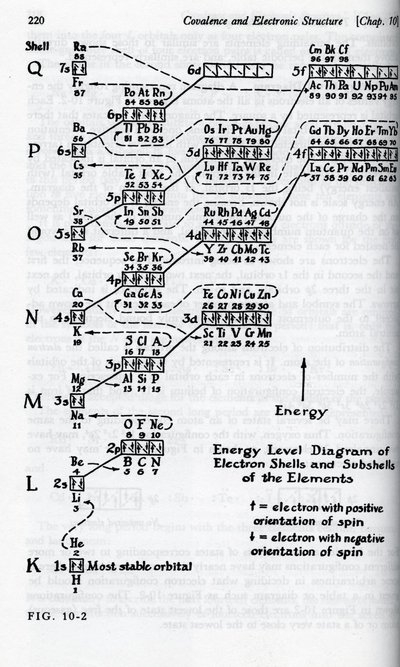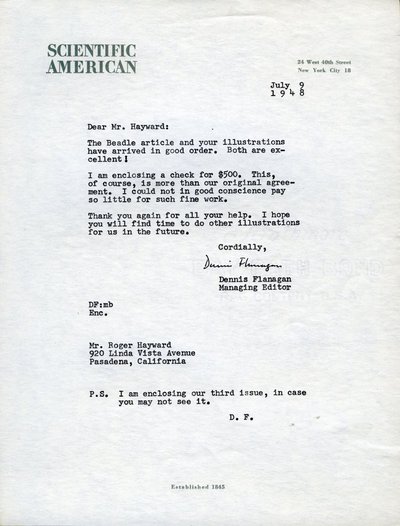Roger illustrated General Chemistry for Linus Pauling in 1946, the first of four books that the two would work on together through W. H. Freeman & Co., followed soon after by illustrations for several of Pauling’s laboratory manuals. Roger also illustrated John Strong’s Modern Physical Laboratory Practice through the University of Chicago Press in 1946, and the two stayed busy working on the second edition of Procedures in Experimental Physics during much of 1948. That same year, Roger illustrated A Laboratory Study of Chemical Principles by Harper Frantz, another W. H. Freeman & Co. publication. The relationship between Roger and W. H. Freeman & Co. grew significantly over the succeeding decades, and much of his life revolved around their work following his eventual move away from architecture.
Dennis Flanagan of Scientific American started a dialogue with Roger in 1948, following his collaboration with John Strong on Procedures in Experimental Physics. Roger was asked to illustrate George Beadle’s “The Genes of Men and Molds,” an article that appeared that same year in Scientific American, the quality of which seems to have exceeded Flanagan’s expectations. Roger’s first interactions with Flanagan provide a telling look at his work ethic and compulsive thirst for the attainment of knowledge:
“I think I should enjoy doing the job. Your quotation of $300 for a dozen or fifteen sketches seems of the right order of magnitude. Actually the money is much less important than the character of the subject, the author and all the other intangibles associated with the problem. In my case, scientific illustrating is a hobby which I undertake solely for the fun of increasing my qualitative knowledge of the scientific world.”
In April of the following year, Roger contributed another set of illustrations to the pages of Scientific American, this time for an article by Linus Pauling on antibodies. Later in September Flanagan approached Roger with a proposal to aid Albert Ingalls, the editor of the “Amateur Astronomer” column, with two to three drawings a month. Roger happily agreed to become a regular contributor, beginning a career and association that would last for nearly two-and-a-half decades. Ingalls quickly voiced his enthusiasm to begin working with Roger, and the two shared a pleasant working relationship for several years:
“I figure you like line, you do it with artistry, but you don’t represent things cockeyed the way too many of these commercial artists do; and you are a telescope maker and you know what it is all about, and so hallelujah.”

Reproduced illustration by Roger Hayward as published in General Chemistry, by Linus Pauling, 1948. More images here

